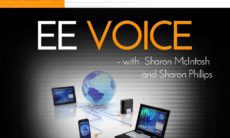The other day I was invited to speak on retention marketing as part of a 3-webinar series on sales enablement. It got me thinking: What is sales enablement, anyway? I remember the term in general use when I worked at IBM in the ‘90s. But it seemed to be mainly about collateral and sales presentations in those days. So I decided to ask Steven W. Wright for help bringing me up to speed on how B2B marketers see the function today. Steve is Chief Analyst at VendorNeutral, a platform that helps buyers of sales technology and sales training find suppliers. Dan Cilley, founding member of the Sales Enablement Society, and co-founder of Vendor Neutral, also contributed. Thanks to them both.
How do you define “sales enablement”? It seems to be heavily about collateral and presentations.
At its broadest, sales enablement refers to any organizational activity, and related sales and marketing technologies, that help sellers sell. Given the half-life of terminology, we are starting to see the term “sales readiness,” which is just as broad.
But, at a sales technology level, sales enablement usually refers to a solution for managing sales-focused content assets using tagging and meta-data to organize and recommend content based on sales stage and other sales activities. That’s how we define it in our Vendor Neutral Sales Technology Landscape.
And, indeed, it is often about collateral and presentations. But it’s a mistake to think of only externally facing content. Sales enablement assets that are internally focused—about competition, questions to ask, steps to take—are equally, if not more, important. The amount of internal knowledge and content can actually be greater than what is sent to buyers, depending on the complexity of the solutions being sold.
I’ve long said that the role of marketing in B2B is to enhance salesforce productivity. That the sales function owns the P&L, and the marketing function provides them leverage. So, I would argue that the job of marketing is sales enablement in the first place. What say you?
I’d define it a bit differently. I think marketing has several roles. One is to establish the branding and public presence of the company and its solutions. We see that most often in terms of web presence, but also press, analyst relations, and social media. Plus the outbound marketing that gets prospects started on the journey to become buyers, namely lead generation.
Marketing is also responsible for finding the right data—demographic, firmographic, technographic—about the ideal customer personas that sellers will engage with. And informing sellers about all that at a general level, but also for specific leads.
You can think of marketing as a kind of concierge that helps build the basis for the seller-buyer relationship. I’m sure we all remember going out to dinner. Marketing finds the right restaurant, ensures the lighting, menu,and ambiance are tested and proven to set the table for the buyer and seller to have a great evening.
That has got to be the most charming metaphor B2B marketing has ever enjoyed. Now, another question. Where are the biggest levers in the sales enablement toolkit?
A great sales enablement tool requires the constant involvement of sales and marketing to curate and perfect the content, conversations, and activities that build the relationship. And that also means constantly measuring engagement both on the buyer and seller sides of the conversation.
Where will we find the most bang for the buck?
Using that technology to leverage the ongoing effort to build, measure, and improve the actions and information that further the buyer journey. There are plenty of sales tech solutions that help automate repetitive activities, but sales enablement requires a deep commitment to building and maintaining the external and internal knowledge of the market, the buyers, and what sellers need.
Is SE a profession?
Certainly, though not an easy one, since it requires knowing how sellers think (and don’t think) and telling sometimes uncomfortable truths to stakeholders. It can be the bridge between marketing and sales. We all know about the lack of alignment between the two, and in some ways that will never go away. But sales enablement, I believe, as a profession, helps the two to communicate and provides a check and balance between them. That doesn’t make for easy organizational politics, and it demands a strong management commitment from both the marketing and sales side.
Where does the function fit in the B2B marketing landscape?
Sales enablement sits at the point where the buyer is interested and has learned something through all the ways marketing can reach out, and manages the transition from interest to wanting a solution.
What advice do you give to CMOs about sales enablement?
When sales enablement reports to marketing, it lacks credibility with sales. CMOs should look at sales enablement as the group representing the needs of the sellers, that can define those needs in ways marketing can understand and act on.






